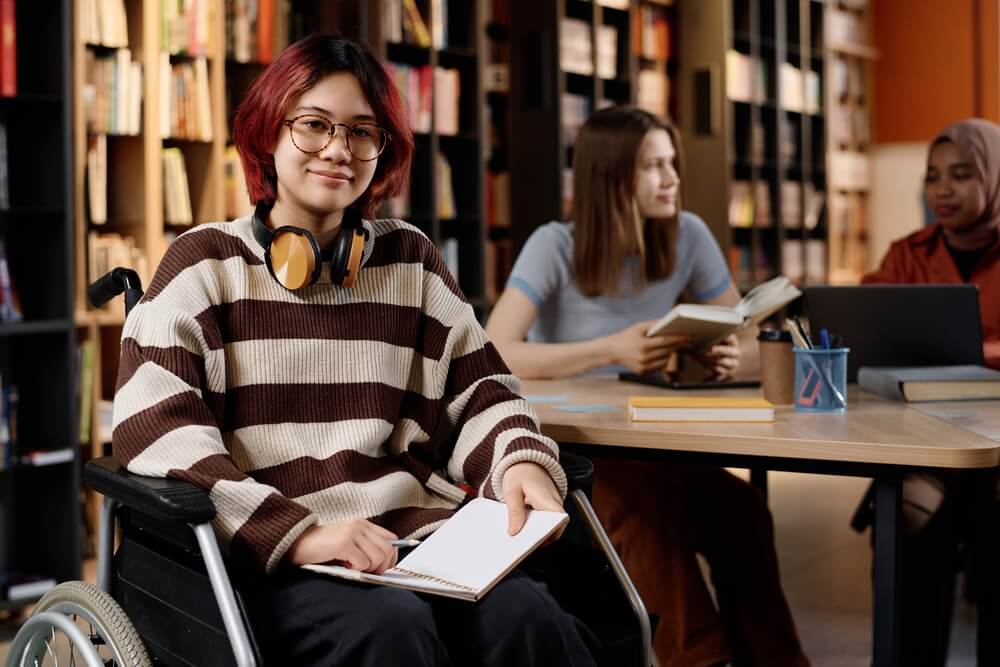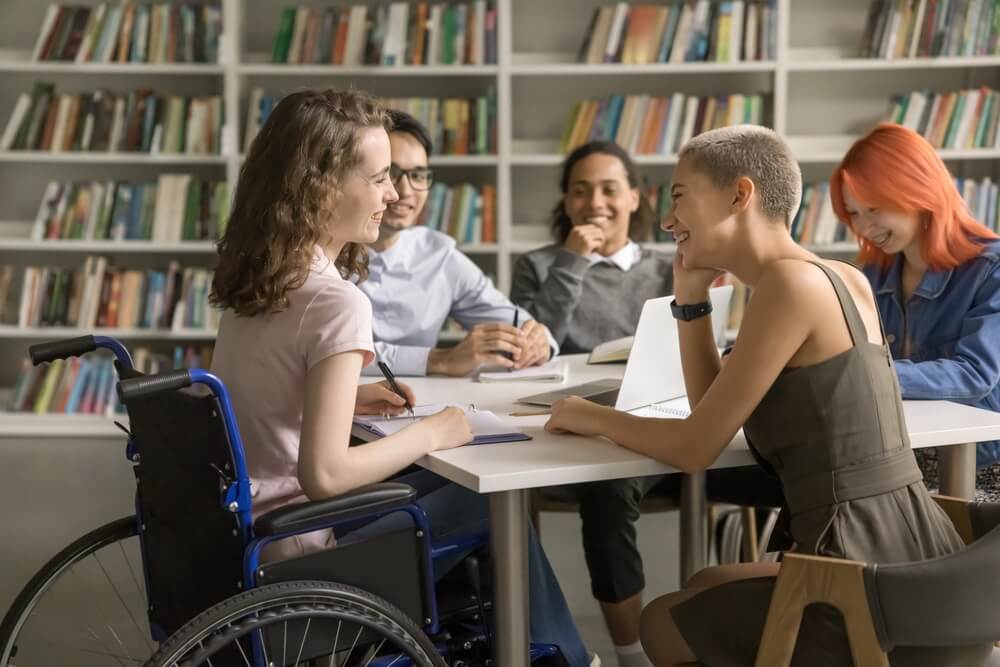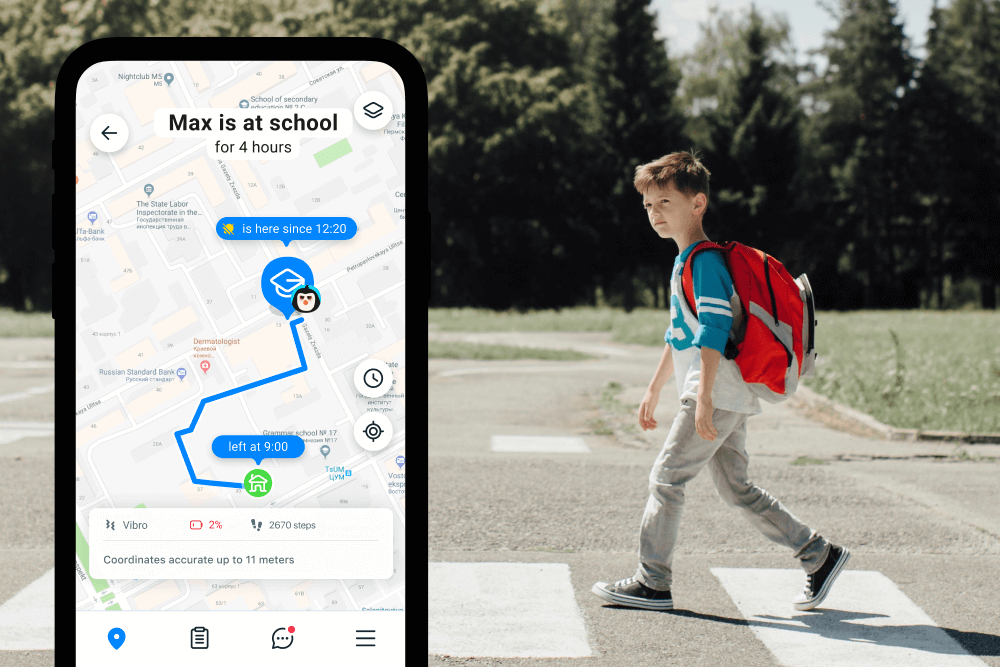The Role of 504 Plan in Supporting Students: An Overview

Have you ever wondered what a 504 plan is and why it’s so important for students with disabilities? Our guide reveals the details of the Rehabilitation Act’s Section 504 and offers guidance for parents, caregivers, and others interested in securing the best possible conditions for each child at school. Here are the details about this program and its benefits.
Contents:
- A Basic Overview of the 504 Plan
- Things Included in a 504 Plan
- What Is the Difference Between an IEP and a 504 Plan?
- How to Get a 504 Plan
- Legal Rights Under 504 Plan
- Findmykids App: Peace of Mind for Parents
- For More Information
- FAQs
A Basic Overview of the 504 Plan

AnnaStills/Shutterstock.com
The United States has a federal law called the Rehabilitation Act of 1973. It allows states to receive grants for vocational rehabilitation services, independent living, and supported employment. The document covers different rules and protections that individuals with disabilities can access.
Section 504 of this law refers to students with disabilities. It ensures these individuals are in an adequate learning setting with access to suitable learning tools.
The 504 plan is a legal framework that allows schools to create formal plans that guarantee support for each student with a disability. It’s a civil rights law that refers to protecting kids with mental or physical impairments.
Things Included in a 504 Plan
The focus of the 504 plan is on accommodations and learning environments. The actions taken will depend on the specific child’s requirements and their impairments. There are also no specific accommodation actions for certain disabilities. Instead, the school develops a plan after assessing the needs of the individual.
Here are some examples that the 504 plan might address:
- Securing an especially designed desk or chair for an individual with a physical impairment
- Providing extra time for a child to complete assignments and tests
- Adjusting the class schedule if possible and necessary
- Allowing verbal testing for individuals with writing difficulties
- Ensuring medication administration at appropriate times
- Providing a quiet area for children who need it when taking tests
The 504 plan should contain details about the areas of educational needs and corresponding accommodations and services. Although schools don’t have to consult with parents, many invite family members to participate in designing this plan for their children.
When designing the plans, it’s important to review them occasionally. Most schools review them yearly, with each responsible person reporting on the areas of educational needs they cover.
What Is the Difference Between an IEP and a 504 Plan?
IEP stands short for an Individual Education Program. These are special education programs for students who require them. The planning process can include adjusting the curriculum and things that the individual learns.
Unlike that, the 504 plan doesn’t involve specialized education. Instead, it focuses on securing the appropriate accommodation to ensure a student with a disability can learn in a standard classroom environment. Depending on the impairment, a single person could qualify for both the 504 Plan and IEP.
How to Get a 504 Plan

Media_Photos/Shutterstock.com
The first thing to confirm is that the person in question qualifies to receive support under this plan. According to the US Department of Education, which enforces the 504 plan, each individual with disability has the right to a free appropriate public education (FAPE).
A school should provide a 504 plan for any student with a disability eligible to receive FAPE in their district. According to Section 504, a child with an impairment (mental or physical) that affects major life activities or with a record of such impairment qualifies as a person with a disability. Some examples include autism spectrum disorder, ADHD, epilepsy, diabetes, etc.
Here are the steps to get a 504 plan:
- A parent or guardian (or that person if they are an adult) submits a 504 plan request. The request should contain an explanation of the person’s disability and any health records related to it. We recommend adding details as to how the impairment limits the child in daily activities and what aids they might require.
- Sending the request and waiting for the school’s evaluation. The school will assess the actual necessity for a 504 plan. That could include checking medical reports and analyzing their grades and overall learning performance. Consulting the teachers and assessing the environment for potential adjustments, such as adding barriers, might also be part of the process.
- Approving the request and proceeding to create a plan. The school confirms your child is eligible for a 504 plan and they start designing it. Most facilities invite parents to help design the best possible program.
Legal Rights Under 504 Plan

VH-studio/Shutterstock.com
Understanding your legal rights is important since it can ensure you get everything you are entitled to under the 504 plan. Here are the details regarding your rights:
- The academy institution must comply with the educational needs of children with disabilities. Primary and secondary educational facilities must provide optimal access to learning environments for all students who attend the school.
- Securing different accommodations and adjustments. For example, your kid should receive a computer if they are having writing difficulties. Some changes in the learning expectations for a child could also be a part of the program.
- Your child might also be eligible for specialized services and instructions. Counseling or working with a speech therapy expert are some examples of what kids with disabilities might be eligible for under the 504 plan.
- The right to know. The school doesn’t have to include you when designing the 504 plan. However, parents have the right to receive regular notifications of any changes made. Even if it’s a small detail like securing a modified textbook, the facility should inform you.
- Challenging a school’s decision. You might not like a part of the 504 plan and want to remove it. Whether you feel it needs little or major adjustments, you can start by sending a formal request to the school. If that doesn’t work, you can require a hearing. An impartial officer will assess all details and decide on the case. Finally, you can even turn to the federal Office for Civil Rights and file a complaint.
Another thing to know is that the 504 plan isn’t applicable in a college. The laws still protect students with disabilities and they are eligible for special accommodation.
Findmykids App: Peace of Mind for Parents
Parents of children with special needs often have more reasons to worry about their child’s safety and well-being. This is where the Findmykids app can be an invaluable tool. The app is designed to help parents keep track of their children’s whereabouts and ensure their safety, giving parents peace of mind.
Why Findmykids app is beneficial:
- Real-Time Location Tracking: Know where your child is at all times, whether they are at school, with friends, or traveling.
- Alerts and Notifications: Receive instant notifications if your child leaves a designated safe area.
- Communication Tools: Stay in touch with your child through the app’s messaging feature, especially useful in case of emergencies.
For parents of children with a 504 plan, the added layer of security and communication provided by Findmykids can significantly reduce anxiety and ensure that their child is safe and supported both inside and outside of school.
For More Information

Twinsterphoto/Shutterstock.com
If you’d like to read more about the 504 plan and protecting children with disabilities, sources that might help include:
- US Department of Education. You can read more about IDEA and the 504 plan, along with evaluation, placement, and procedural safeguards.
- National Education Association, The platform focuses on differences between IEP and the 504 plan but also offers various resources to achieve professional excellence and student success.
- Children and Adults with ADHD (CHADD). The organization focuses on providing resources and supporting and empowering individuals with ADHD. It’s also helpful for parents and caregivers.
Now that we’ve answered the “what is a 504 plan question,” we hope you better understand the rights and protection that federal regulations offer to individuals with disabilities.
If you have a child with a disability, they are entitled to receive education in the least restrictive environment.
Parents are the ones who initiate things with a 504 plan request, and upon approval, the school proceeds to create a suitable program.
FAQs

fizkes/Shutterstock.com
What Is a 504 Plan in Simple Terms?
A 504 plan is a legal framework that aims to ensure each individual with a disability receives adequate education in institutions that receive federal funding. After confirming that US law recognizes the disability, the educational institution works with the family and relevant professionals. Together, they develop a plan to secure adequate education for the individual, depending on their impairment.
What is a 504 Plan for ADHD?
The section ensures that kids who don’t need special education services receive additional help in the classroom. That ensures any actions that lead to behavior management and better academic success for individuals with ADHD.
What Are the Disadvantages of a 504 Plan?
Each school develops plans separately, so there are no standardized processes. Obstacles often prevent enforcing the plan, and the evaluation process might be subjective.
The picture on the front page: PeopleImages.com – Yuri A/Shutterstock.com
Проверьте электронный ящик




















